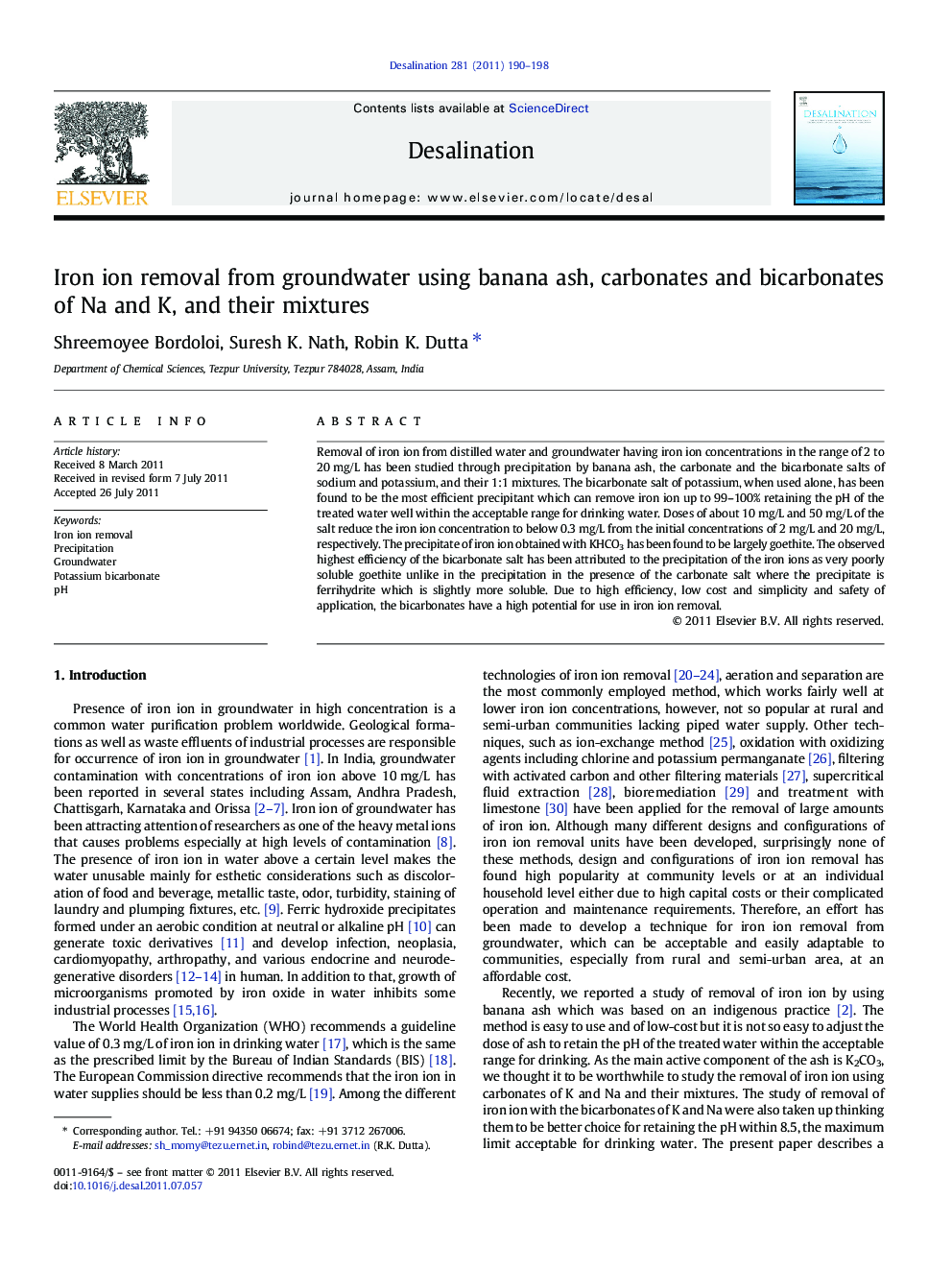| Article ID | Journal | Published Year | Pages | File Type |
|---|---|---|---|---|
| 624781 | Desalination | 2011 | 9 Pages |
Removal of iron ion from distilled water and groundwater having iron ion concentrations in the range of 2 to 20 mg/L has been studied through precipitation by banana ash, the carbonate and the bicarbonate salts of sodium and potassium, and their 1:1 mixtures. The bicarbonate salt of potassium, when used alone, has been found to be the most efficient precipitant which can remove iron ion up to 99–100% retaining the pH of the treated water well within the acceptable range for drinking water. Doses of about 10 mg/L and 50 mg/L of the salt reduce the iron ion concentration to below 0.3 mg/L from the initial concentrations of 2 mg/L and 20 mg/L, respectively. The precipitate of iron ion obtained with KHCO3 has been found to be largely goethite. The observed highest efficiency of the bicarbonate salt has been attributed to the precipitation of the iron ions as very poorly soluble goethite unlike in the precipitation in the presence of the carbonate salt where the precipitate is ferrihydrite which is slightly more soluble. Due to high efficiency, low cost and simplicity and safety of application, the bicarbonates have a high potential for use in iron ion removal.
► Bicarbonates of Na and K are more effective than the carbonates in iron removal. ► 0.07–0.1 g/L KHCO3 removes 99–100% of iron from 2 to 20 mg/L within 1–2 h. ► The final pH after iron ion removal by the bicarbonates remains between 6.8 and 7.7. ► The excellent performance of the bicarbonates is due to formation of goethite.
